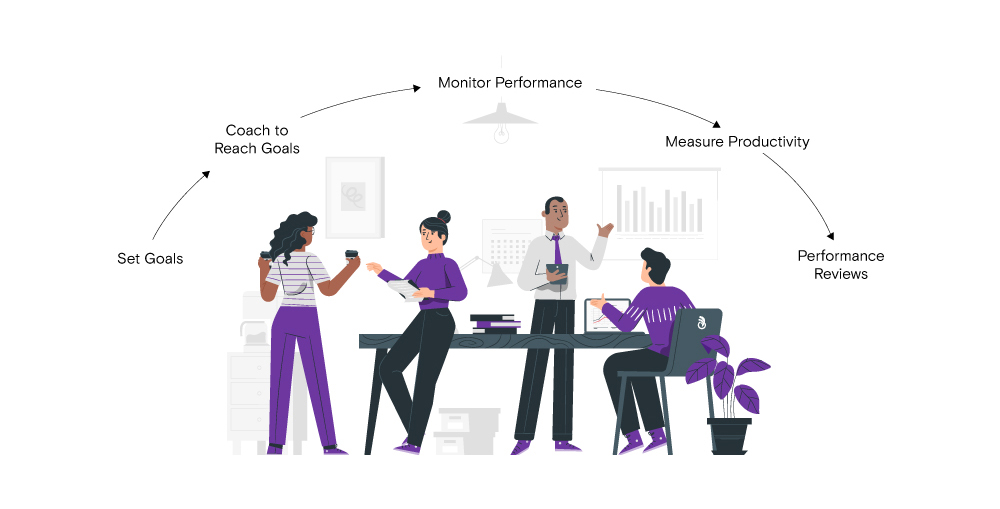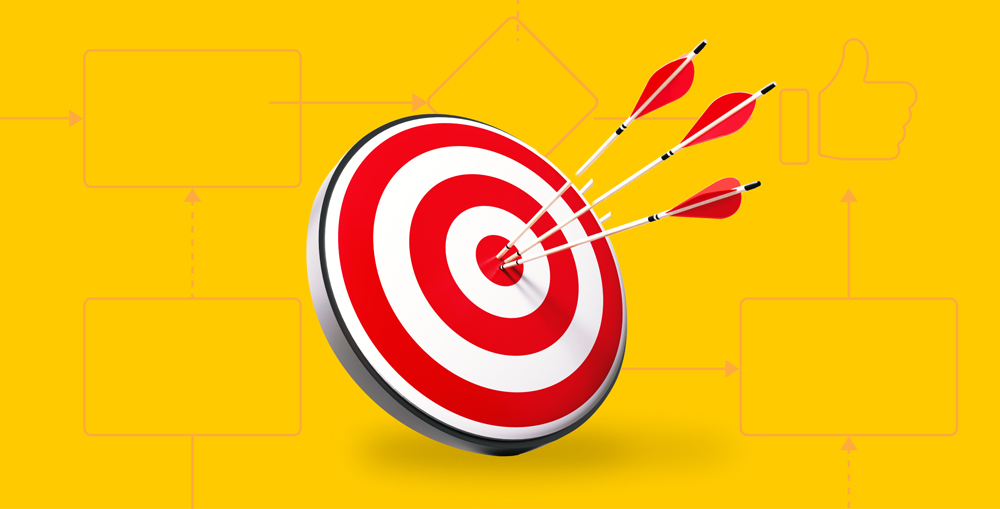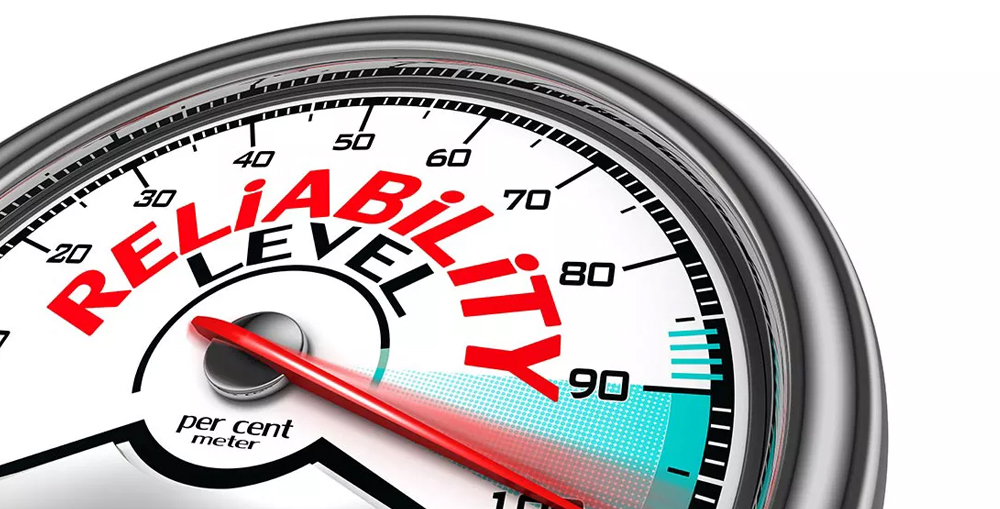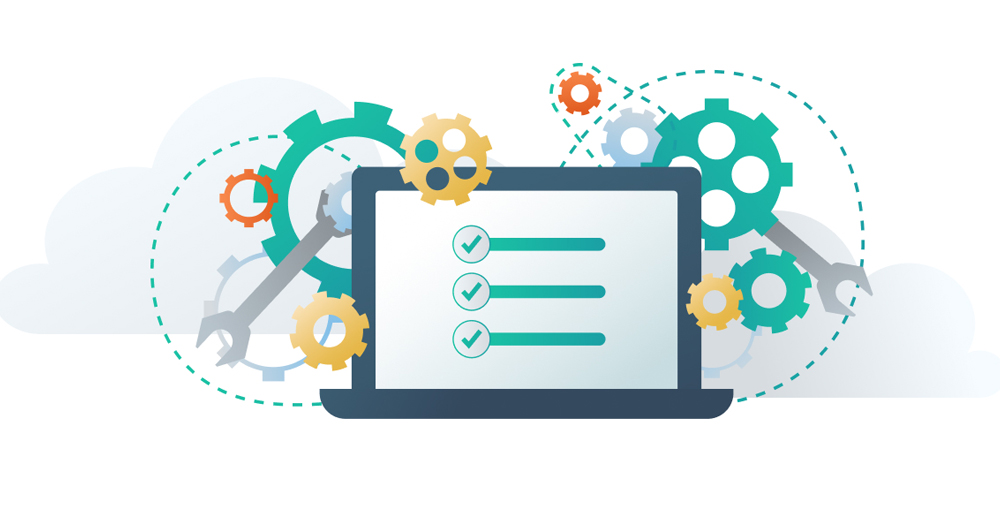
The performance management success can be closely related to the business’s success as higher performance results in higher productivity and higher customer satisfaction. No matter how modern or advanced IT infrastructure you have, or how efficiency your production facility is, if your workforce is not performing at their best then you can never achieve your goals. That is why the performance management have become so important in present day workplace. Having a great talent and high performing workforce doesn’t only mean good hiring methods and HR practices, but a business will have to nurture its workforce, it must have to increase their engagement and satisfaction to achieve the higher performance. That is why the performance management is becoming very difficult day by day. The products and services you deliver to your customers will determine your success and failure. And that heavily depends on the employee performance. That is why the performance management is crucial for business success.

What is Performance Management?
In the modern business landscape the performance management is a method, approach, process, technology and tools a business used to monitor, track, enhance and improve the employee productivity, efficiency and value they are adding to the high-level organization’s goals and objectives. The traditional performance management methods and approaches are not effective anymore. The modern performance management rely on a software tool referred to as enterprise performance management system/software. Here are some of the most common goals of a modern performance management system:
- Increase employee efficiency, engagement and enhance their individual skills
- Maximize the operational efficiency and productivity of the entire organization
- Maximize the profits by reducing the input and generating more revenue
- Improve employee experience, increase their satisfaction and reduce employee turnover
- Provide a better reliable framework to track and monitor the performance
The enterprise performance management software have completely transformed the traditional performance management. Businesses in Dubai and all around the UAE are also adopting to the modern technological solutions and tools to make their performance management more impactful. However, I still feel that the performance management software is at the place where the internet was in the late 90s. The internet technology have completely revolutionized everything today but at that time it faced skepticisms and a lot of uncertainty was around.The performance management software is also at the same stage. Sooner it will become an absolute necessary for all modern businesses and enterprises.

In this blog we will discuss 6 most common performance management problems and their solution with the help of a modern performance management software.
Performance Management Problems: 1. Unclear Goals and Objectives
The lack of clarity in goals and objectives is the most common and most impactful problem with performance management. Vaguely defined goals and objectives lead to confusion among the employees. Employees can’t understand what exactly is expected from them to achieve, and how their goals and objectives will contribute to the high-level organizational goals and objectives. In fact in such situation most of the time the managers also failed to develop a right mechanism to measure the performance. Ambiguity and confusion can kill the performance, it not only lead to a failure in achieving your performance goals but it will eventually cause a lot more problems. When the goals and objectives are not clear the managers and employees fail to develop right business processes to achieve those goals. The lack of clarity and uncertainty led to frustration and stress, which itself is very bad for productivity. This also have long term consequences such as increased employee turnover.

How to clarify the Goals and Objectives?
The businesses should clearly define their vision and mission. In the modern fast paced world, it is absolutely fine having dynamic vision and goals. Usually the vision and mission statements also keep changing with the time, hence the goals and objectives too. But it is very important that a business should have a clear and understandable vision and long term goals. The short term goals and objectives should be aligned with the long term goals and objectives and this relation should be logical and understandable. For that the business need to define clear and specific goals and objectives. In today’s fast paced markets, the business should clearly define the role of each individual employee, team, department and business functions so every employee know what is expected from them and how they should do it. Hence the managers should guide the teams and employees on how to move forward by setting up internal benchmarks and milestones.

The managers should involve employees in goal setting and strategy making processes, this will motivate them and give them a sense of connection with their goals and objectives. Employee engagement is one of the best advantage of using a performance management software. The performance management software facilitates flow of information and help managers and employees in understanding the high-level organizational goals and objectives. When the employee have clear and understandable vision, organizational goals and objectives, they have a vantage point to set their individual goals and objectives aligned to high-level goals and objectives. This usually tend to yield excellent performance. When the employees knows what the scale of measuring the success is and what success will look like, they get motivated and work harder to achieve their goals and objectives. That is why the clarity in company vision, high-level organizational goals and objectives is important to set valuable individual goals and objectives and to derive the internal processes and mechanisms to achieve those goals and objectives.

Performance Management Problems: 2. Poor Communication
The communication is the lifeblood of any business. Without effective communication a business can never achieve its goals. In fact poor communication led to several problems and have long term repercussions. The poor communication can deteriorate the performance as the employees can’t fully understand what the business is expecting from them to do. The communication is an essential component of each performance management process. Whether it is the goal setting and strategy making process, if everything is not communicated effectively the employees will remain confused about several things, which led them to work without a clear purpose or motive. When employee don’t have a clear objective or motive and they are not communicated how valuable their contribution is they tend to work aimlessly and perform poorly. There are several reasons of poor communication, such as:
- Unclear and ambiguous language of written communication, such as emails or any other format
- Poor communication practices failed to deliver right information to the right person at the right time which results in incorrect actions or no action taken at all
- Unproductive discussions and meetings, due to personal relationship and behavior of managers and employees, which usually distract them from the topic and the result in very little progress
- Managers failed to communicate the goals, objectives and plans, and employee failed to express their problems which cause delayed/incorrect action or no action at all
The poor communication also lead to deteriorate the relationship between the managers and the employees which could have serious consequences in the long term. That is why the poor communication is a huge problem within the modern business environments.

How to Improve Communication?
A modern performance management software provides a complete communication framework to maximize the communication, information flow and employee engagements. A multi-channel communication framework enable flow of information via multiple channels and it also help facilitating personal conversation and one on one meetings. Whether you are a small company or a large enterprise, whether your employee works at a single location or at multiple locations, whether you are following traditional work practices or hybrid work environment, an effective communication is a key to success. Here are some of the benefits of a multi-channel communication framework offered by the performance management software/system:
- Ensure employee receive the right information at right time, prevent delays
- Offer features to make sure the message has been delivered, read and understood
- Facilitate one to one meetings and create more opportunities for frequent dialogues
- Provide multiple remote communication channels to enable employee reach even if they are off-campus or working at remote sites
- Facilitate personalized communications which build relationship between managers and employees and help them align with company goals and objectives
- Automate information sharing processes, and set priorities and alerts for urgent communications
The performance management software also keep record of all previous interactions and can also capture the communication details from supported channels which help managers and employees to access the information on later stages if needed. The effective communication is a key to success.

Performance Management Problems: 3. Lack of Trust
The employee performance and their trust on the managers and at the business is mandatory for the performance. If employee don’t trust their managers or the enterprise they will eventually end up performing poor, it will also increase employee turnover rate. There are several factor that could hurt the trust of the employees, the most important is the lack of transparency. Usually without a performance management software the performance management processes are done manually. The human factor alone can harm the quality of the data. Furthermore when the managers do the employee evaluation they might only focus on certain things, without considering their other performances, this cause distrust and reduce the transparency of the system. The poor communication and lack of understanding of the evaluation matrices also ruin the employee trust on the managers and the enterprise also. Unfair reward and recognition, biased in feedback and managers’ personal liking and disliking also impact the process very badly and it can completely kill the trust. When the employee don’t trust on the managers and the enterprise or corporates, they tend to perform poorly and have no motivation with low morale.

How to Enhance Employee Trust?
The performance management system/software offers a variety of features that can help managers to set up several processes to enhance the employee trust. On top of everything the employee performance management software help improving communication between employees and the managers and it also help employee to participate and contribute in decision making processes which gives them confidence and help building the trust. The employee performance management software also help businesses bring transparency and fair accountability practices to their performance management processes. When the employee start feeling that the system is completely fair and there is no room for personal bias or favoritism they feel more comfortable with the performance management process and this help managers gaining more trust of the employees. Here are a few key features of the performance management software which help building employee trust:
- The performance management software add transparency and data driven processes which add value to employees’ daily work flow and enhance their trust
- The managers can have better communication with the employees which ensures they can easily understand the employee’s point of view and their problems
- The performance management software also offer a dedicated employee feedback collection module which let them express themselves freely and openly and increase their confidence on the system
- The employee performance management software streamline reward and recognitions processes and bring transparency and accuracy to the processes which help gaining employee trust
- Managers can use employee performance management software data to develop employee development and training program which can meet their needs and help them build the trust
- The performance management software offers real-time feedback monitoring which enables managers to proactively guide employees and make them more successful in achieving their goals
The employee performance management software help managers develop a culture and environment of understanding the importance of trust and employee satisfaction which can significantly raise the productivity and performance.

Performance Management Problems: 4. Micromanagement
The micromanagement is one of the most common problem businesses face. The micromanagers might think they are doing right thing by excessively controlling the employees and their daily tasks, however, in reality the micromanagement is very counter-productive. When a manager or supervisor manages your each and every move in a day, you will definitely feel powerless, incompetent and demotivated towards your daily tasks. As the micromanagement unknowingly gives employee an impression that they are incompetent and a supervisor or manager has to control their each and every move in order to get the work done. Eventually the employee start thinking they are incompetent or they are doing something wrong, this develop a sense of reliance and dependency. The employee become more dependent on the managers and they can’t work autonomously as they require constant monitoring and instructions from the supervisor or manager.

The micromanagement also kills innovation and creativity, it also hinder the ability of employee to work in a team as they neither have their own opinion or nor they can take their teammates opinion, as everything is managed by the manager. When employees are not given any control or their opinion is not valued, they feel distant form their goals and objectives. This can have a great toll on the performance, on top of that the micromanagers also don’t trust on the abilities and competencies of their sub-ordinates which is why they are always unhappy and unsatisfied with the employee’s work and keep forcing them to do better while not giving them any room to grow or evolve. As the manager or supervisor is deeply involved in each and everything which makes employee think that the manager might not trust them, and eventually they will also loose trust on the managers. The micromanagement can account for up to 70% of employee turnover in some industries. That is why micromanagement is very bad for the performance and poses a great threat to the overall organization’s performance.

How to Avoid Micromanagement?
Well it is obvious the businesses can’t simply replace all micromanagers, however, the performance management software provides a digital framework which can be very effective to reduce the impact of the micromanagement on the employees and on their performance. One of the biggest problem of micromanagers is their need to constantlymonitor the progress on the projects or tasks which cause them to interrupt employees many times in a day which keep them distracted from their work and make it difficult to focus on things they are doing. The performance management software can offer a performance dashboard where the micromanagers can monitor the employee performance in real-time. This let them focus on the employees who are lacking and they don’t bother the employee who are on schedule or progressing in the right direction. Another great feature of the performance management software is that it provide a structured framework for the discussion and meeting schedules which prevent micromanagers to interfering with the employees while they are working. This also restrict the micromanagers to meet or have discussion with the employees as per already planned schedules. Hence the negative impact of the micromanagers can be reduced by 60% to 90%.

Performance Management Problems: 5. Poor Strategy and Lack of Focus
The primary goal of performance management is to support and guide the employees to succeed them in achieving their goals and objectives which add value to the high-level organizational goals and objectives. The biggest problem with performance management strategy is that the businesses often think it will going to solve their all problems, however that is not true. A performance management system can’t just solve every problem in a business environment, at best it can bring autonomy and higher productivity to various processes and empower employees to be able produce quality work with limited supervision. The performance management keeps them motivated and encourage them to give their best. Another big mistake that most businesses made while implementing a new performance management strategy is putting too much burden on the managers. As the managers are majorly responsible for implementing the performance management practices so they will have to work a lot. This requires proper training programs which makes the managers able to understand and implement the performance management system effectively.

How to Improve Performance Management Strategy?
The first and most important thing that a performance management strategy should have is limited goals and objectives, too many goals and objectives keep your employees distracted and often confuse them. But when the employees are properly communicated about the importance of each goal, they tend to perform well. It is important to clearly identify the critical key goals which add most of the value to high-level organizational goals and objectives. The performance management software is very helpful in setting up and communicating goals and objectives to the employees. It help bridging the gap between high-level goals and the individual goals and help businesses align all resources with the most valuable goals and objectives. Setting up goals and objectives is crucial for the success, sometimes focus on wrong things could significantly harm the performance. For example, a branch manager have the goal to keep their employees 100% utilized, this led them to form an environment and a work pace (slower) at which all the employees remain 100% utilized all the time, because they feared that if the employee started working on the fast pace, then they might ran out of the work, which will eventually affect manager’s KPIs.
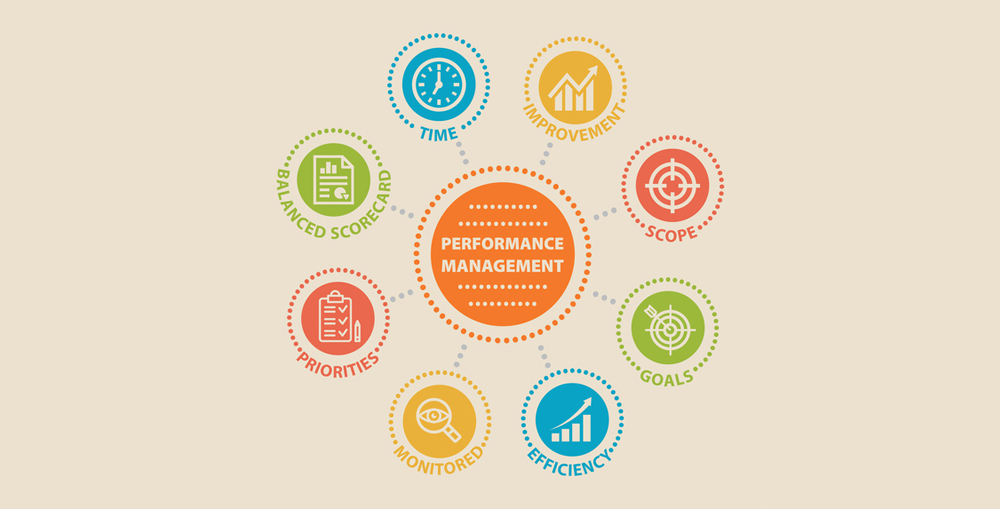
The goal setting is crucial for the success of the performance management process that is why it is important that the goals and objectives remains flexible and the managers have room to incorporate employee’s feedback. This will give employees more control and will enable a better communication between the employees and the managers. The performance management software can also help making all goals visible to everyone that is important as when an objective is complete or a goal is achieved, everyone know it is done. Furthermore the biggest advantage of the performance management software is that it utilizes the digital components to automate the performance data collection methods. Which provide real-time overview to the employees, managers and higher management. These features help managers understand employees’ problems and help them identify the areas of improvements. The performance management software also brings transparency and fairness to the employee evaluation and appraisal processes. When the employees know they will be praised for their good performance they tend to perform well. And when the employees knows that they will be held accountable for their poor performance and they tend to seek ways to improve their skills, and performance.
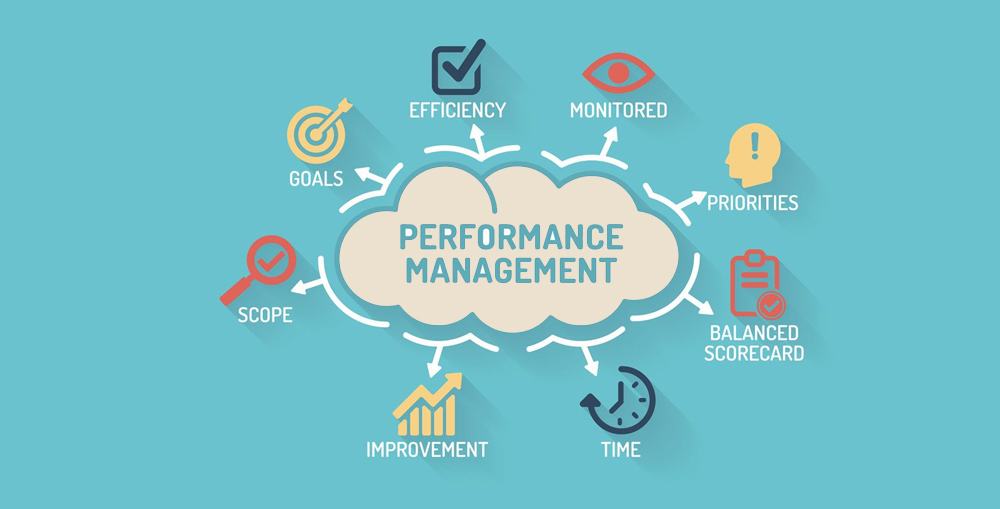
The performance management software doesn’t have a switch which you will turn on and the performance will magically goes up. In fact the performance management software helps implementing a long term performance management strategy which gradually improves everything. It help businesses understand the obstacles, limitations, strengths and weaknesses of their employees and internal business processes. The performance data plays a crucial role in building strategies, making plans and taking decisions. Businesses can utilize the performance management data to improve their training and personal development programs. The reward and recognition is also crucial to achieve higher performance. The performance management software help increasing employee engagement and satisfaction which can significantly reduce the employee turnover. Furthermore the performance data portrays a very clear picture of what talent the business have and what they might be needing, hence help HR hire the best talent which can add most value to the organizational goals and objectives and help the business in achieving maximum productivity and performance.

Performance Management Problems: 6. Performance Data Quality
Another big problem with performance management is the quality of the performance data. Traditionally everything was manual, hence the data collection was manual too. In the modern performance management practices the data collection is still manual, the reviews, feedbacks, performance measurements and even KPIs are calculated manually. The manual data entry is a big problem, the human errors at data entry time, human bias, and several other factors deteriorate the quality of the data. The performance management data is utilized in decision making process. The managers make their plans and strategies son the bases of the performance management data, the employee development programs, training and coaching programs all are designed on the bases of data gathered during the performance management. That is why this data is very crucial for the success of the performance management. However, manual data collection and manual data analysis can cause several problems. When a business implement a modern performance management strategy the biggest problem they face is the manual performance data collection.

Verified Data Fetching from other Systems
The performance management software is capable of integrating with other enterprise solutions and systems which let it automatically fetch verified data from other systems. Usually this integration is done via APIs, which enable both systems to share data with each other, the performance management software can fetch highly accurate and verified data which significantly improves the performance data quality. For example, the performance management software can fetch highly accurate stats from the customer data base and it can link it to the KPIs of the individual salesman as well as the overall performance of the sales department or even a particular branch. All the internal systems and databases can be on either centralized information center or keeping data separately. The performance management software have ability to fetch data from both scenarios without any hurdle or problem. The automatic data fetching techniques enables the performance management software to produce the best results. The high-quality performance data help the management make more effective decision based on the data they collected. Hence overall performance can be significantly improved with a digital performance management system.

See More: How Queue Management System Helps Maximizing the Efficiency?
Conclusion
The performance management is crucial for a business’s success. It help engaging employees, ensures maximum employee satisfaction, it reduces the input and maximize the outcome, ensuring maximum profitability and growth. Here in Dubai and all around the UAE the businesses are rapidly adopting to modern performance management practices and methods, however, sometimes it could be very overwhelming for the management and the employees too. That is why many businesses made many mistakes, in this blog we have discussed 6 most common and most crucial problems that businesses usually face when implementing a performance management strategy. A modern performance management software/system help businesses create effective strategies and implement them to achieve higher results. The performance management software automates various processes, collects data automatically and manually and let the management analyze the data instantly with in-built AI based analytical and data processing tools. This not only simplify the performance management process but also took out the extra workload that a performance management process traditionally puts on the managers.
That is why in present day the performance management software is the best solution to solve all performance management problems. In this blog we have discussed most common problems that businesses face while transitioning from the traditional annual and manual performance management to more effective modern performance management methods or continuous performance management methods. RSI Concepts is a leading performance management software/solution providers in Dubai, UAE. If you want to learn more about the subject of if you want us to implement a performance management solution for your business, please feel free to contact us through our Contact Us page or leave a comment in the comment box below and we will get in touch with you soon.
Check out this: Advantages of Hybrid Mobile Applications

